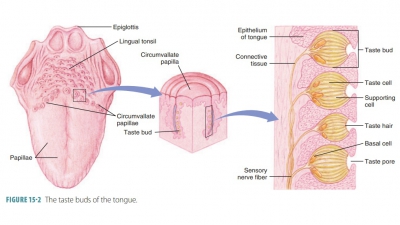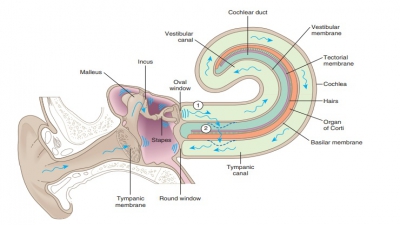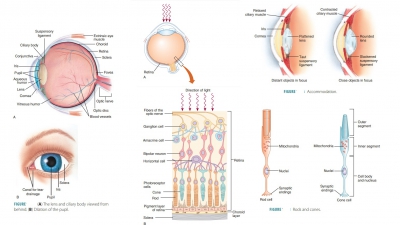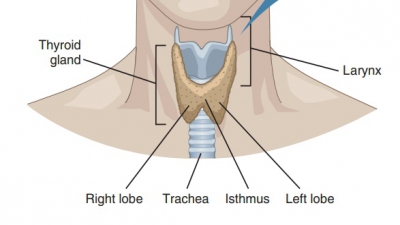Sense of Equilibrium
| Home | | Anatomy and Physiology | | Anatomy and Physiology Health Education (APHE) |Chapter: Anatomy and Physiology for Health Professionals: Special Senses
The sense of equilibrium consists of static equilibrium and dynamic equilibrium.
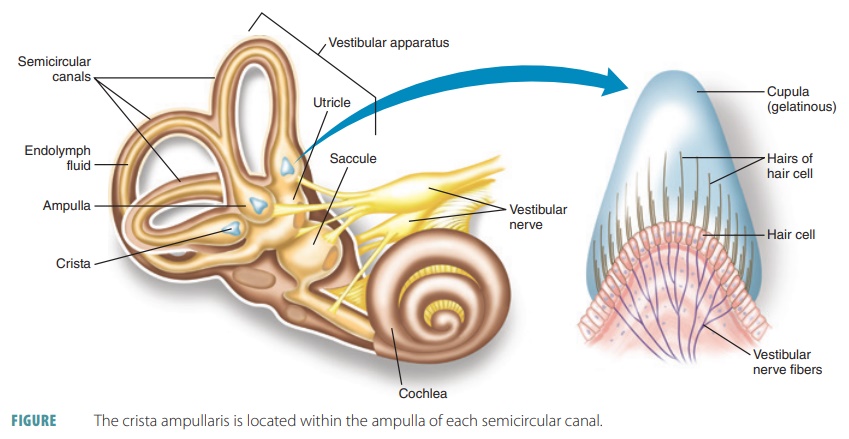
Sense of
Equilibrium
The sense of equilibrium consists
of static equilibrium and dynamic
equilibrium. In static equilibrium, the
position of the head is sensed while the head and body are still, maintaining
stability. The organs of static equilibrium are located in the vestibule. The vestibular apparatus contains
the equilibrium receptors in the semicircular canals and vestibule. The
receptors in the vestibule are related to static equilib-rium. Those in the
semicircular canals are related to dynamic equilibrium.
In the labyrinth of the
vestibule, both the utricle and saccule have a tiny, flat macula with many sensory hair
cells, which respond to linear acceleration. These hair cells are surrounded by supporting
cells and are embedded in an overlying
otolith membrane. This consists of a mass of jelly-like material contain-ing tiny stones
made of calcium carbonate crystals called statoconia. These ear stones are known as oto-liths,
which are very dense and increase the weight of the membrane as well as its resistance to changes in motion.
Otoliths are important in equilibrium.
When the head is upright, the
hairs project upward into the gelatinous material. When the head bends forward,
backward, or to one side, the hairs bend to signal nerve fibers. Nerve impulses
travel into the CNS via the vestibulocochlear nerve and the brain controls the
skeletal muscles to maintain balance. In the utricle, the macula is horizontal,
with the hairs remaining vertical while the head is upright. There fore, the
utricular maculae respond well to accelera-tion in the horizontal plane and
the tilting of the head to the side. This is because vertical movements do not
displace the horizontal otolith membrane. The situa-tion is different in the
saccule, because the macula is almost vertical and the hairs protrude
horizontally through the otolith membrane. Therefore, this area responds best
to vertical movements. A thin passage called the endolymphatic duct is continuous, with the narrow endolymphatic
duct connecting the utricle and saccule. The endolymphatic duct ends in a
closed cav-ity known as the endolymphatic
sac. FIGURE 15-6 shows how the maculae respond to changes in head position.
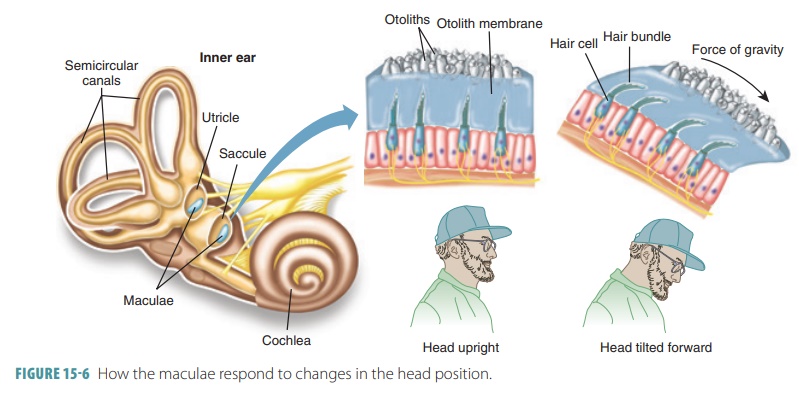
Fibers of the vestibular nerve synapse with these hair
cells. The endings of these fibers are coiled around their bases. The
vestibular nerve is another division of the vestibulocochlear nerve. Nearby superior and inferior vestibular ganglia contain
cell bodies of the sensory neurons.
In dynamic equilibrium, when the
head and body move or rotate, the motion is detected, aiding in balance. The
organs of dynamic equilibrium are the three semicircular canals in the
labyrinth. Each crista ampullaris is bound to a gelatinous mass known as the cupula, into which its sensory hair
cells extend. The strands of the cupula radiate out and contact the “hairs” of
the hair cells. The base of each hair cell is encircled by dendrites of
vestibular nerve fibers. The free surface of every hair cell supports up to 100
long stereocilia, which resemble long microvilli. Every hair cell in the
vestibule also has a single large cilium known as a kinocilium. The cristae are excited by acceleration and deceleration
movements of the head and are mostly stimulated by rotational movements. Each
crista has both supporting and hair cells that are similar to those of the
cochlea and maculae. FIGURE 15-7 shows the crista ampullaris within the ampulla.
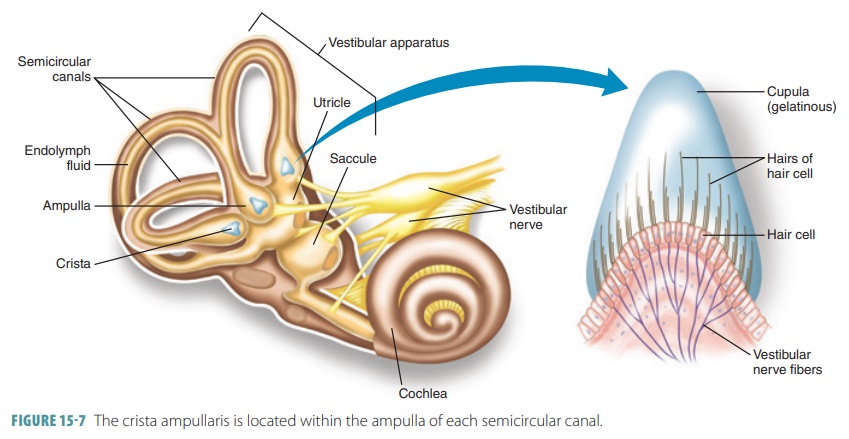
When the head or body turns rapidly, the hair cells of the crista ampullaris are stimulated, but the fluid inside the canals remains stationary. The hair cells within the cupula are bent, sending signals to the brain. The cerebellum can predict consequences of rapid body movements and trigger the skeletal muscles to maintain balance. Additionally, mechanoreceptors associated with the neck joints communicate with the brain about position changes and the eyes assist in maintaining balance. During rotation of the head and immediately after this movement, a condition known as vestibular nystagmus occurs, in which the eyes make a series of odd movements linked to impulses that are transmit-ted from the semicircular canals of the ears because of movement of the endolymph. Vestibular nystagmus often occurs with the condition known as vertigo, which is a balance disorder similar to dizziness.
1. Differentiate
between static equilibrium and dynamic equilibrium.
2. Where
are sensory hair cells located in the inner ear? Explain their functions.
3. Differentiate
between vertigo and vestibular nystagmus.

